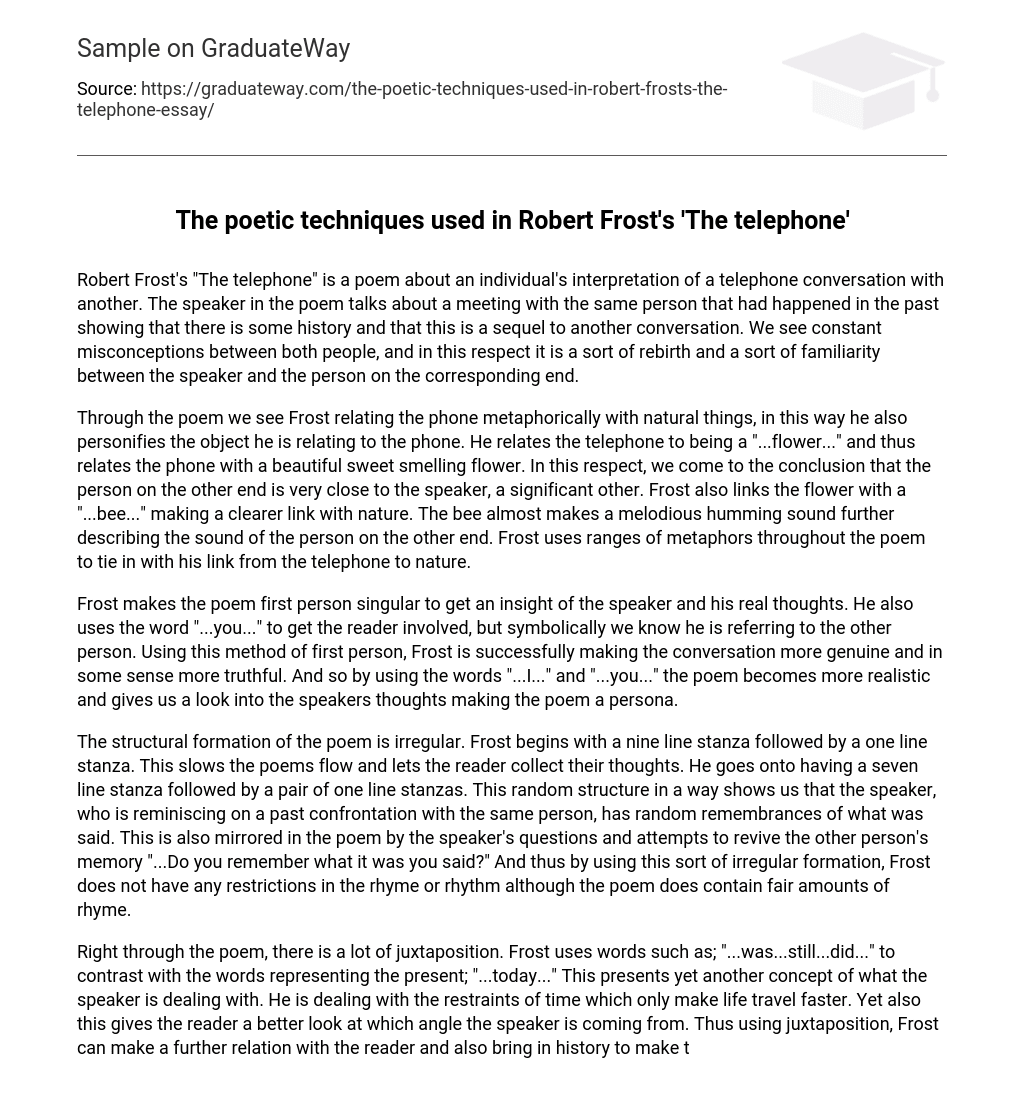In Robert Frost’s poem “The Telephone,” an individual shares their personal reflection on a phone conversation with someone else. The speaker mentions a previous meeting with this person, indicating a history and suggesting that this conversation is a continuation of their previous exchange. Throughout the poem, there are ongoing misunderstandings between the two individuals, creating a sense of renewal and familiarity between the speaker and the person on the other end of the phone.
Throughout the poem, Frost metaphorically links the phone to natural elements and personifies the object itself. By comparing the phone to a flower, he suggests that it is beautiful and fragrant. This analogy implies that the person on the other end of the line is very close to the speaker, likely a significant other. Frost further connects the flower to a bee, emphasizing its relationship with nature. The bee’s melodious humming sound parallels the sound of the person’s voice on the phone. Frost employs various metaphors in the poem to strengthen his connection between the telephone and the natural world.
Frost employs a first person singular perspective in the poem, allowing for a deeper understanding of the speaker’s true thoughts. By using the word “…you…” in a symbolic manner, the reader is also drawn into the conversation. This approach enhances the authenticity and truthfulness of the poem. Through the use of “…I…” and “…you…”, Frost creates a sense of realism that offers insight into the speaker’s thoughts, ultimately giving the poem a personal touch.
The structure of the poem is unorthodox as Frost employs different stanza lengths. Initially, he begins with a nine-line stanza, then transitions to a single line. This deliberate choice serves to slow down the poem’s flow and allows for contemplation. Subsequently, Frost switches to a seven-line stanza followed by two more single lines. This erratic structure mirrors the speaker’s recollection of a previous encounter with the same person, resulting in haphazard memories of their conversation. The poet also captures this randomness through the speaker’s inquiries and attempts to jog the other person’s memory: “…Do you remember what it was you said?” By embracing such an irregular formation, Frost liberates himself from traditional rhyme and rhythm constraints while still incorporating some elements of rhyme within the poem.
Throughout the poem, there is an abundance of juxtaposition as Frost employs words such as “was”, “still”, and “did” to contrast with words representing the present, such as “today”. This presents a unique perspective on what the speaker is grappling with; the constraints of time that only accelerate the passage of life. Additionally, this juxtaposition offers insight into the speaker’s mindset. By employing this technique, Frost can establish a stronger connection with the reader and add relevance to the poem by incorporating elements of history.
“The Telephone” by Robert Frost is a poem that showcases the speaker’s telephone call and its association with nature and natural elements. By incorporating the first person perspective, the poem becomes more intimate, while the use of juxtaposition adds relevance to the audience’s experience.





